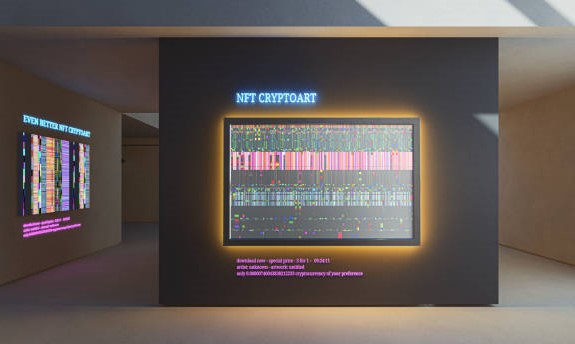The musician Grimes and her brother Mac made some animations, snapped up in about 20 minutes, and were sold on a website called Nifty Gateway. The total sales were worth over US$6 million.
Even though the price tag is very high, people can simply watch or right-click and download the videos to their galleries. The videos had a vision of a cherub rising from Earth, Mars, and imaginary landscapes. The video buyers won’t get a copy of the videos themselves, but will be receiving a unique tradable certificate called NFT which stems from “Non-Fungible Token”.
So what’s the added value of the certificate called NFT?
When an NFT buyer receives the tradable certification, it is definitely a sign of authentication that gives the buyer the ability to sell the certification to somebody else when they want to.
NFTs are digital tokens that constitute the cultural answer to the scarcity of technical goods on the internet. They are making their way in various industries such as art, rock music, and virtual NBA trading cards. In this way, they are helping make certain people rich.
How do Non-Fungible Tokens Work?
NFTs are digital certificates that prove a claim of ownership to an asset. Their digital nature allows them to be transferred or sold. They are secured by using blockchain technology.
A blockchain is a decentralized ledger that stores information in an encrypted form. This makes them very secure and tamper-resistant. this feature makes blockchains very useful when it comes to storing records.
Unlike Bitcoin, NFTs are not fungible, which means they are not exchangeable. Instead, they are operated on a non-fungible basis. They are designed to pinpoint a unique claim on an asset.
About NFTs
NFTs claim ownership of an asset that is usable meaning assets that can be copied, pasted, and shared such as movies, images, and animations.
So what distinguishes the authenticity of the unique digital work?
Authenticity and ownership are often elusive when it comes to online culture. The rise of digital media and the creation of new forms of creative work has created a void for authentic work.
The internet is a system that allows people to easily and openly take bits and pieces of information from a computer and make them available to anyone else. Any content watched, shared, or remixed that is available online is called a non-rivalrous good and does not stop other people from doing the same thing.
Constant sharing offers an abundance of material to view, copy, or remix, which creates the economies of the abundance of the new culture.
TikTok is a platform that reimagines common audio loops with visual rituals, which are imitated in endless variations. Tweets are valuable when they are especially retweeted and Facebook videos are valuable when watched and shared to increase engagement.
Freeing information
The longevity of digital content depends on its ability to spread. In order to prevent it from spreading, various technological and legal reforms such as encryption and copyright laws have been implemented.
NFTs are composed of a combination of culture and code, and they create a new kind of control that doesn’t rely on existing systems. They are the origin of their authenticity in the shareable culture.
So what do we get now?
In the 20th century, Canadian science fiction writer William Gibson described cyberspace as a consensual hallucination. He said that everyone agrees that the online world is real. NFTs are here to take the concept of consensual hallucinations to the next level, to show that these strings of ones and zeros are different and full of authenticity compared to the identical string of ones and zeroes.
NFTs are an attempt to reintroduce scarcity into the world of abundance. The NFT market is already full of buyers, and even humble sports trading cards can be bought for a lot of money.
Will NFTs be distinguished around the world?
NFTs are focused on creating a level of separation between the creators and consumers of online content, and the ones that can be paid to generate work or claim that they own one. This is the reason why the concept of decentralized content creation is so important. However, NFTs are recentralizing the distribution of culture.
NFTs make it easier to use fungible money to purchase non-fungible authenticity. This way has always been used for a long history in various industries.
It might seem that artists are suddenly entitled to receive compensation for the work that they produce and seems to be an easy copy pastable material. However, this is not yet clear since the rules and regulations around compensating online content aren’t that smooth yet.
NFTs are also criticized for their energy consumption since they rely on a lot of power for their computers to encrypt their tokens. According to CryptoArt, the calculations required to create one NFT would have used up a massive amount of electricity and emitted tons of CO₂ emissions.
Besides emitting an immense amount of CO₂, NFTs are creating new forms of scarcity that enable a new cultural agreement about authenticity. They have already created a wide-scale hierarchy, power, and exclusion around the web with the haves and have-nots rules.
To know more about NFTs and protect yourself from legal complications, reach out to us and we will explain to you all what you need to know about Crypto and legal for Crypto.
Legally Yours,







